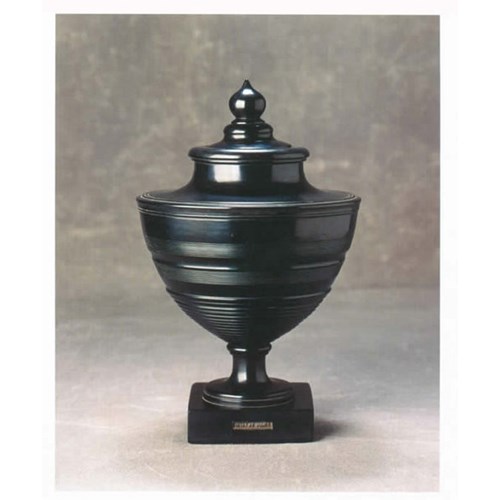A Powerful Kongo Fetish Figure
Epoque Early 20th century
Medium Wood, Metal, Cloth, Nails, Glass
Dimension 33 cm (13⁰/₁ inches)
Wood, metal, cloth, nails, glass
Areas of dark, black lacquered patina, worn through from use
The cavity to the stomach now empty
Kongo Peoples, Democratic Republic of Congo
Early 20th Century
Size: 33cm high - 13 ins high
Epoque: Early 20th century
Medium: Wood, Metal, Cloth, Nails, Glass
Dimension: 33 cm (13⁰/₁ inches)
Provenance: Ex collection Dave Dhal, Oregon, USA
Ex Private collection, Los Angeles, USA
Ex Mark Eglinton Tribal Art, New York, USA
Ex Private English collection
Literature: Sacred medicines and divine protection are central to the belief of the Kongo peoples (Democratic Republic of Congo). The Kongo believe that the great god, Ne Kongo, brought the first sacred medicine (or nkisi) down from heaven in an earthenware vessel set upon three stones or termite mounds. A nkisi (plural: minkisi) which loosely translates, as a ‘spirit’, yet it is represented as a container of sacred substances which are activated by supernatural forces that can be summoned into the physical world. Visually, these ‘minkisi’ can be as simple as pottery or vessels containing medicinal herbs and other elements determined to be beneficial in curing physical illness or alleviating social ills. In other instances, ‘minkisi’ can be represented as small bundles, shells, and carved wooden figures. ‘Minkisi’ represent the ability to both ‘contain’ and ‘release’ spiritual forces, which can have both positive and negative consequences on the community.
‘Nkisi nkondi’ figures are highly recognisable through an accumulation of pegs, blades, nails, or other sharp objects inserted into its surface. Medicinal combinations called ‘bilongo’ are sometimes stored in the head of the figure but frequently in the belly of the figure, which is shielded by a piece of glass, mirror, or other reflective surface (now missing). The glass represents the ‘other world’ inhabited by the spirits of the dead, who can peer through and see potential enemies. Elements with a variety of purposes are contained within the ‘bilongo’. Seeds may be inserted to tell a spirit to replicate itself; ‘mpemba’ or white soil deposits found near cemeteries represent and enlist support from the spiritual realm. Claws may incite the spirits to grasp something, while stones may activate the spirits to pelt enemies or protect one from being pelted.
Plus d'œuvres d'art de la Galerie









